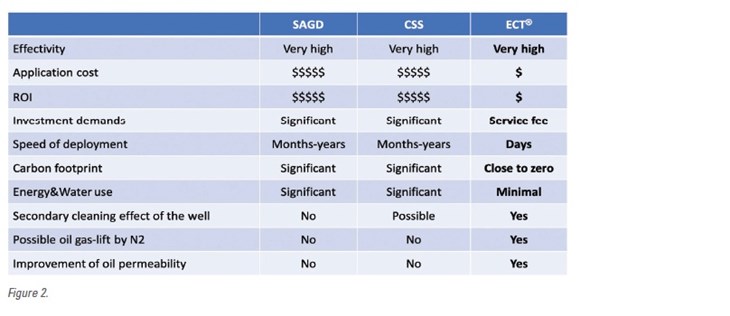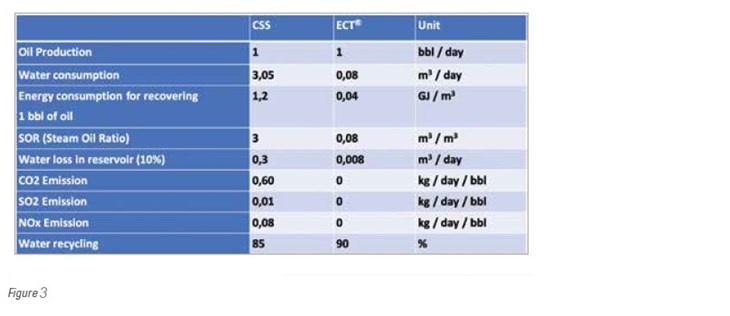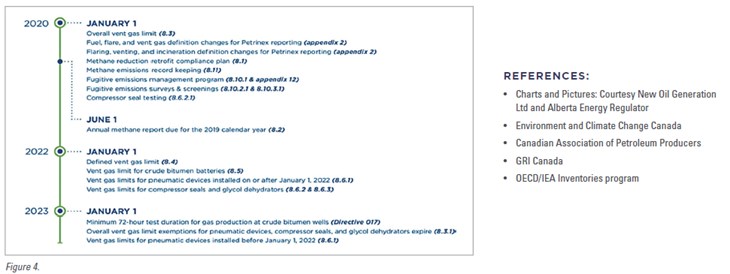Some emission assessment issues are:
(i) use of simple barrels production bases vs emission factors will result in an error;
(ii) use of detailed calculations & approaches require expert knowledge, detailed data, which is time consuming and costly;
(iii) measurement devices take time and may vary by manufacturer and device
calibration, the location of reading, wind direction, change in plant production etc.
Industry Sources
In general, fugitive emissions from oil and gas activities may be attributed to the following primary type of sources:
• Fugitive equipment leaks.
• Process venting.
• Evaporation losses.
• Disposal of waste gas streams by venting or flaring.
• Accidents and equipment failures.
Accidents and equipment failures may include well blowouts, pipeline breaks, tanker accidents, tank explosions, gas migration to the surface around the outside of wells, and surface-casing vent blows. Gas migration to the surface may be caused by a leak in the production string at some point below the surface casing, or by the migration of materials from one or more of the hydrocar-bon-bearing zones which are penetrated. A surface-casing vent blow may be caused by a leak from the production casing in the surface casing or by fluid migration up into the surface casing from below.


• Leakage of CFCs from refrigeration systems and SF6 from electrical components.
• Land disposal of solid waste.
• Methane emissions from wastewater handling.
• Methane from industrial wastewater and sludge streams.
• Nitrous oxide from human sewage.
Further CO2 is present as a natural constituent of most untreated hydro-carbon streams and occurs in high concentrations in some enhanced oil recovery schemes. Consequently, it is a constituent of all fugitive emissions, as well as noteworthy amounts of raw CO2 are stripped from the pro-duced gas at sour gas processing and ethane extraction plants, and subsequently discharged to the atmosphere through vents or flare systems.
The definition of fugitive emissions is, “an intentional or unintentional release of gases from anthropogenic activities excluding the combustion of fuels.” For example:
• Oil and gas production.
• Crude oil transportation and refining.
• Natural gas processing, transportation and distribution.
Factors to Consider
The key factors that affect the amount of fugitive emissions from a given operation, are the amount and type of infrastructure, integrity of the system, the amount of waste gas created and the incentives or requirements to control waste-gas volumes and reduce fugitive emissions. These factors in turn are a function of the parameters such as:
1. Design and operating practices.
2. Frequency of maintenance and inspection activities.
3. Type, age and quality of equipment.
4. Type of hydrocarbons being produced and handled including their compositions.
5. Operating conditions.
6. Outputs/volumes.
7. Pumping or compression requirements.
8. Metering requirements.
9. Treatment and processing requirements.
10. Frequency and duration of process upsets.
11. Sweet, sour or odorized service.
12. Population density near the facility.
13. Off-shore or onshore operations.
14. Distance to market or next downstream segment from this industry.
15. Market value of waste hydrocarbons.
16. Applicable environmental and conservation regulations.
17. Pricing/economics incentives.


A good practice is to disaggregate the industry into the applicable segments and subcategories, then sub-divide to evaluate the emissions separately for each. The approach selected in each case should be commensurate with the amount of emissions and the resources available for assessing these emissions. Consequently, it may be appropriate to apply different approaches to different parts of the industry, and possibly even include some direct monitoring of emission sources. The overall approach, overtime, should be one of progressive refinement to address the areas of greatest uncertainty as well as capturing the impact of specific control measures.
A recommended framework for developing national inventories of fugitive emissions from oil and gas activities is as follows:
• Decide on the appropriate level of analysis based on the expect-ed amount of emissions and their significance compared to the values for other sectors in the country and to total global anthropogenic emissions of greenhouse gases. Compile the input data required for application of the selected approach or approaches.
• Estimate the emissions and check the results for possible errors and anomalies and make any appropriate adjustment or corrections.
• Determine the largest sources and those that contribute most to un-certainty in the total inventory.
• Access need to apply more refined approaches to specific key sources and revise the inventory accordingly.
In general, the value of avoided hydro-carbon losses is very site-specific and depends on many factors such as:
1. Value of the hydrocarbons in terms of invested costs up to the point of control.
2. Capital and operating costs to achieve the proposed emission reductions compared to the costs to find and develop new gas supplies.
3. Supply and demand constraints. Often the conserved gas becomes reserve production that is not sold until reservoir and market conditions change to the point where demand exceeds supply. Thus, the economic benefit of avoided losses may not be realized until near the end of the project life when the avoided gas losses are finally sold.
4. Applicable government taxes, royalties, subsidies and incentives.
There have been numerous and substantial advancements in recent years in the available
methods for conducting Tier-3 source-specific emission assessments. A summary from the CAPP (Canadian Association of Petroleum Producers) states:
1. Activity based emissions and control factors: These are more refined emission factors that those applied in the Tier-1 approach. They include, but are not limited to, factors for estimating the combustion products from flares, emissions from fugitive equipment leaks, solution gas emissions from oil emulsion treaters and production storage tanks and gas consumption by gas-operated devices, etc.
2. Empirical correlations: Examples of empirical co-relations include the various API algorithms for determining evaporation losses from storage tanks and product loading/unloading terminals, and leak-rate correlations for converting leak screening data to emissions rates.
3. Computer models and simulators: These are software applications utilize rigorous engineering principles and calculation methods to estimate emissions based on specific physical, operating and activity parameters or the target source.
4. Direct measurement techniques: These include duct or stack flow measurements, bagging, high flow sampler, isolation flux chambers and portable wind tunnels.
5. Indirect measurement techniques: These include remote sensing by devices such as laser, fume detectors, radar detectors etc.
Many of the Tier-3 methods require the use of experienced well-trained personnel or specialist to achieve reliable results. Moreover, they require either very detailed site-specific data or the performance of actual field measurements. The use of these re-fined approaches allows greater dis-aggregation of the emissions, and in turn, facilitates better interpretation of the results. It also allows more meaningful intra-and international comparison with corresponding specific emissions rates in other regions.
It is important to achieve proven transparent results, account for specific control measures and understand the uncertainties in the developed results. However, the cost of achieving such results should not become a significant burden on re-sources available to reduce emissions. Focused (or optimized) measurement and monitoring programs should be conducted to confirm calculated emission reductions where such values are significant.
Some industry associations have been developing comprehensive codes/handbooks for use by member companies in assessing their emissions. The objective for a number of these initiatives have been to provide a flexible framework in which individual companies may assess their emissions, and to establish a base set of terms, source categories and nomenclature to facilitate inter-company comparisons and allow easy aggregation of the results for rollup into national emissions inventories. The API has developed a calculation workbook for oil and gas production equipment fugitive emissions, followed with API 622, 624 & 641 standards.
CAPP has prepared a document for upstream oil and gas operations. In addition, there are several commercial software packages available for developing and maintaining Tier 2 emission inventories.


While discussing these updates with New Oil Generation Ltd. of Prague, we learnt that:
• Exothermic Chemical Treatment (ECT) is an Enhanced Oil Recovery method, although it can also be considered as a primary production method.
• ECT is a thermal recovery method of heavy oil that promotes reservoir stimulation through the triple effect of chemical reaction generating heat, pressure and nitrogen gas.
• The objective of ECT is to achieve the highest recovery factor possi-ble, not only through the primary effects of chemical reaction, but also by activating nonproducing layers containing heavy oil.
• By employing ECT technology and increasing the recovery factor of the oilfield, we reduce the overall energy input necessary for further infrastructure and facility development of the oilfield. No construction = no pollution.
In current industry practice, enhanced oil recovery is huge, as seen in Figure 2. While this is ongoing, our current understanding on GHG reduction per each technology is seen in Figure 3.
The Alberta Energy Regulator issued directive 60 on July 7, 2020 for upstream petroleum industry flaring, incinerating and venting. The document that pro-vides details information and analysis including timelines (See Figure 4).
Conclusion
As we keep in mind the current practices, we must remember the goal is to achieve zero emissions.




